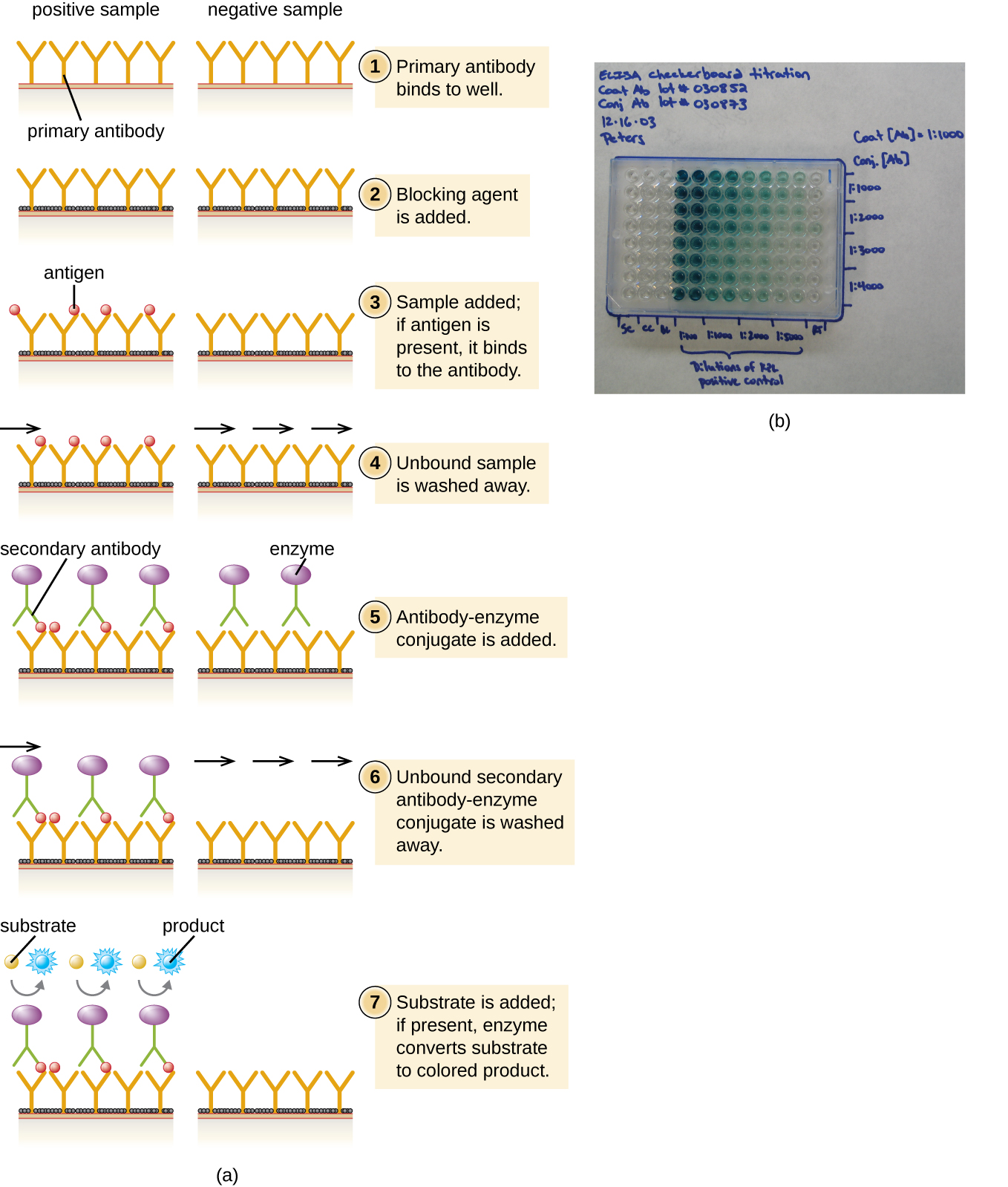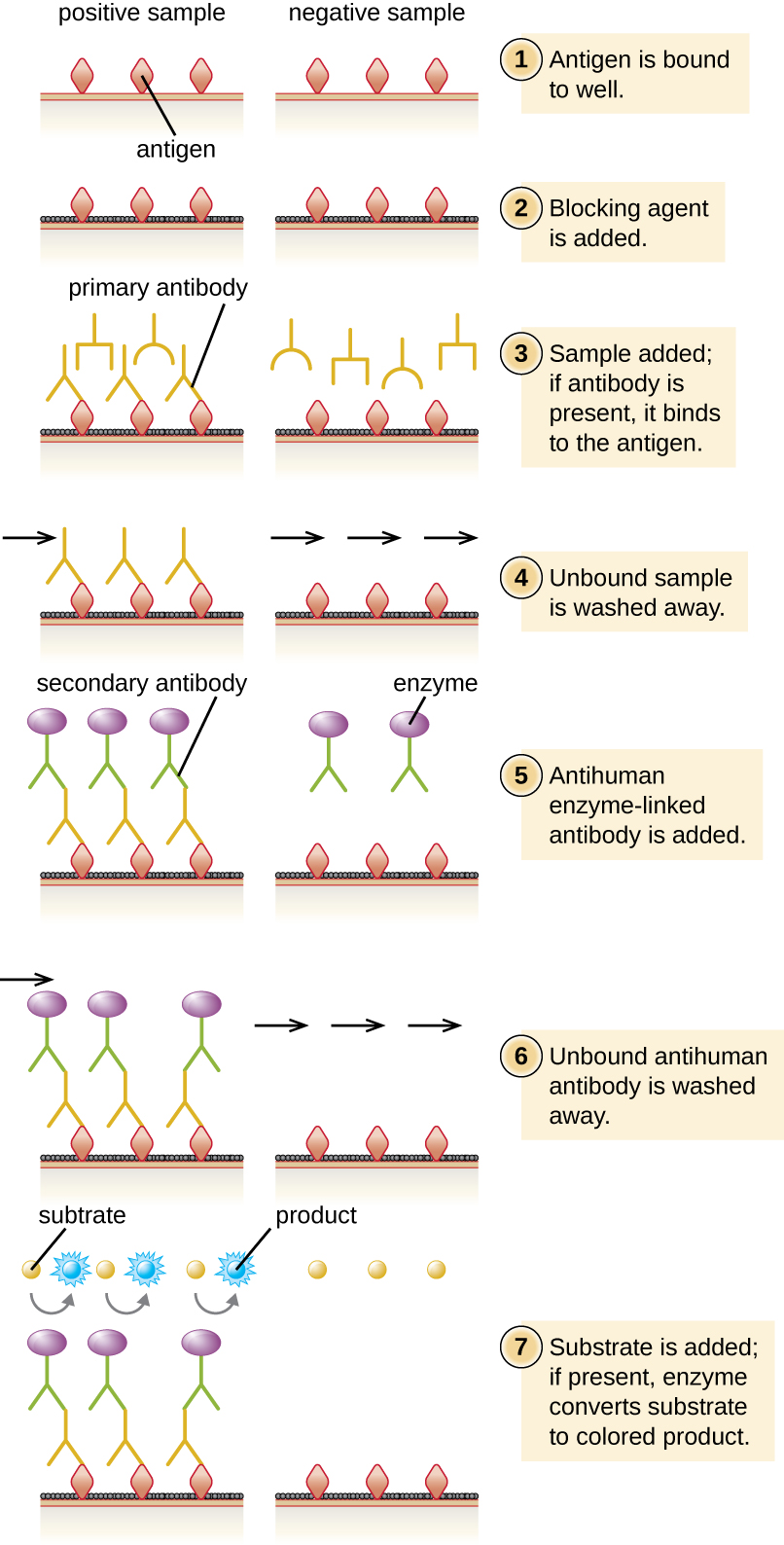| << Chapter < Page | Chapter >> Page > |
In an indirect ELISA , we quantify antigen-specific antibody rather than antigen. We can use indirect ELISA to detect antibodies against many types of pathogens, including Borrelia burgdorferi ( Lyme disease ) and HIV . There are three important differences between indirect and direct ELISAs as shown in [link] . Rather than using antibody to capture antigen, the indirect ELISA starts with attaching known antigen (e.g., peptides from HIV) to the bottom of the microtiter plate wells. After blocking the unbound sites on the plate, patient serum is added; if antibodies are present ( primary antibody ), they will bind the antigen. After washing away any unbound proteins, the secondary antibody with its conjugated enzyme is directed against the primary antibody (e.g., antihuman immunoglobulin). The secondary antibody allows us to quantify how much antigen-specific antibody is present in the patient’s serum by the intensity of the color produced from the conjugated enzyme-chromogen reaction.
As with several other tests for antibodies discussed in this chapter, there is always concern about cross-reactivity with antibodies directed against some other antigen, which can lead to false-positive results. Thus, we cannot definitively diagnose an HIV infection (or any other type of infection) based on a single indirect ELISA assay. We must confirm any suspected positive test, which is most often done using either an immunoblot that actually identifies the presence of specific peptides from the pathogen or a test to identify the nucleic acids associated with the pathogen, such as reverse transcriptase PCR (RT-PCR) or a nucleic acid antigen test.


Although contacting and testing the 1300 patients for HIV would be time consuming and expensive, administrators hoped to minimize the hospital’s liability by proactively seeking out and treating potential victims of the rogue employee’s crime. Early detection of HIV is important, and prompt treatment can slow the progression of the disease.
There are a variety of screening tests for HIV, but the most widely used is the indirect ELISA. As with other indirect ELISAs, the test works by attaching antigen (in this case, HIV peptides) to a well in a 96-well plate. If the patient is HIV positive, anti-HIV antibodies will bind to the antigen and be identified by the second antibody-enzyme conjugate.
Jump to the previous Clinical Focus box. Jump to the next Clinical Focus box.

Notification Switch
Would you like to follow the 'Microbiology' conversation and receive update notifications?